The Intel SSD 600p (512GB) Review
by Billy Tallis on November 22, 2016 10:30 AM ESTAnandTech Storage Bench - The Destroyer
The Destroyer is an extremely long test replicating the access patterns of very IO-intensive desktop usage. A detailed breakdown can be found in this article. Like real-world usage and unlike our Iometer tests, the drives do get the occasional break that allows for some background garbage collection and flushing caches, but those idle times are limited to 25ms so that it doesn't take all week to run the test.
We quantify performance on this test by reporting the drive's average data throughput, a few data points about its latency, and the total energy used by the drive over the course of the test.
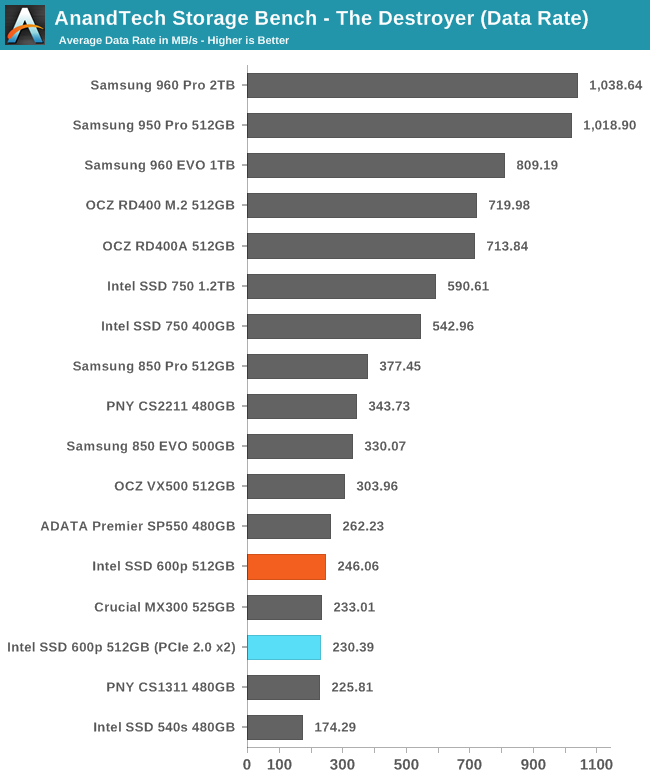
The average data rate sustained by the 600p on The Destroyer shows that the drive is almost entirely limited by the speed of the 3D TLC NAND, and it is barely any faster than the Crucial MX300 that uses the same NAND.
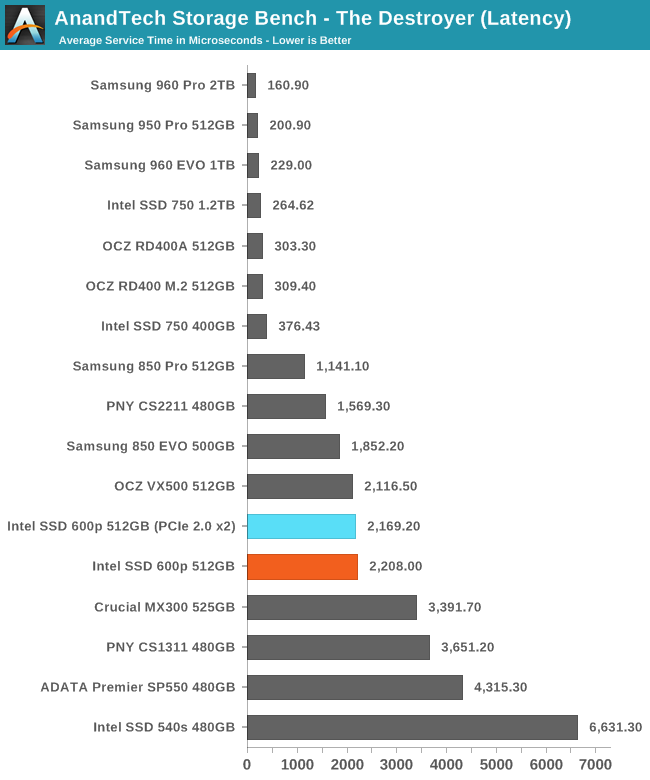
The average service time of the 600p is much lower than most TLC SSDs, so the NVMe PCIe interface is providing some latency benefit even when the drive's throughput doesn't need anything faster than SATA. The 600p is still only as good as a mid-range MLC SATA SSD and doesn't come close to the low latency of high-end NVMe drives.
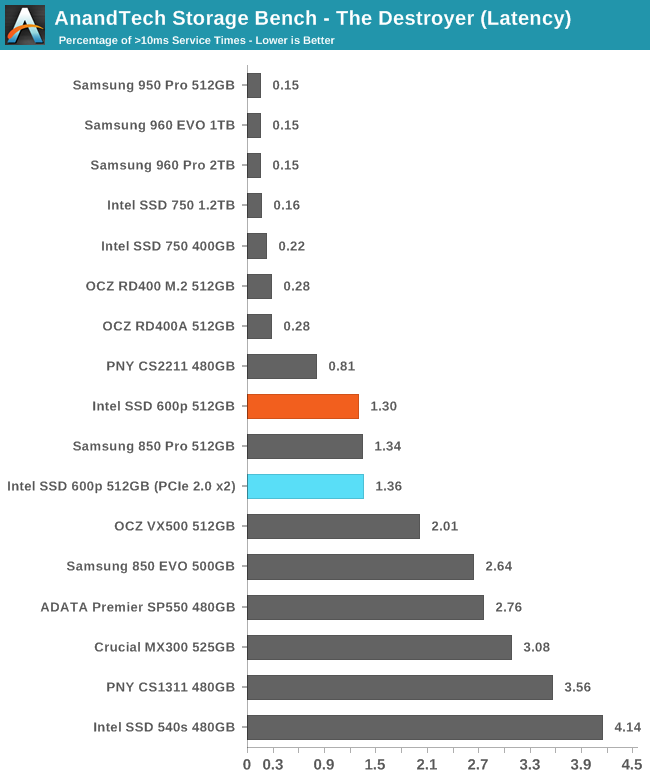
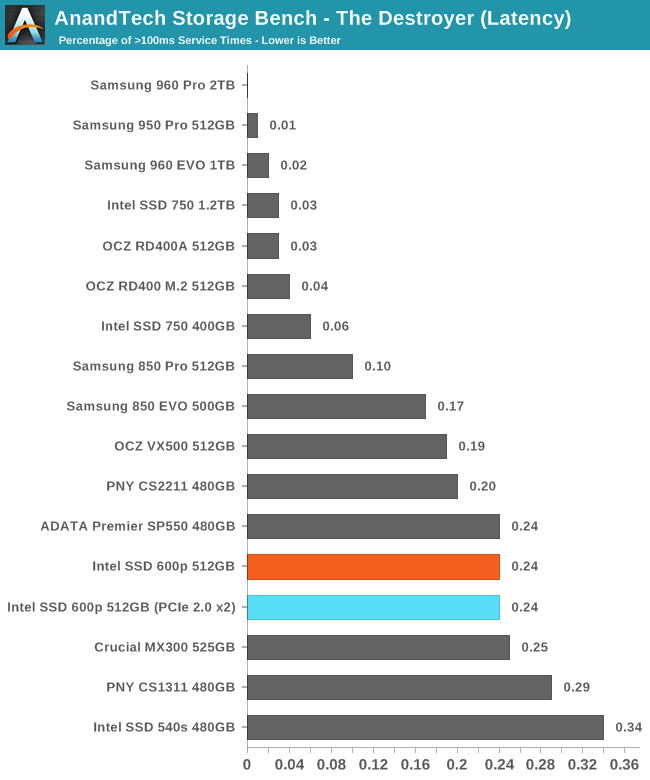
The number of high latency outliers above the 10ms threshold and above 100ms tells two quite different stories. The 600p is as good as most MLC SATA drives at completing most of its operations in under 10ms, but when the drive stalls, it does so as severely as a budget TLC SATA SSD.
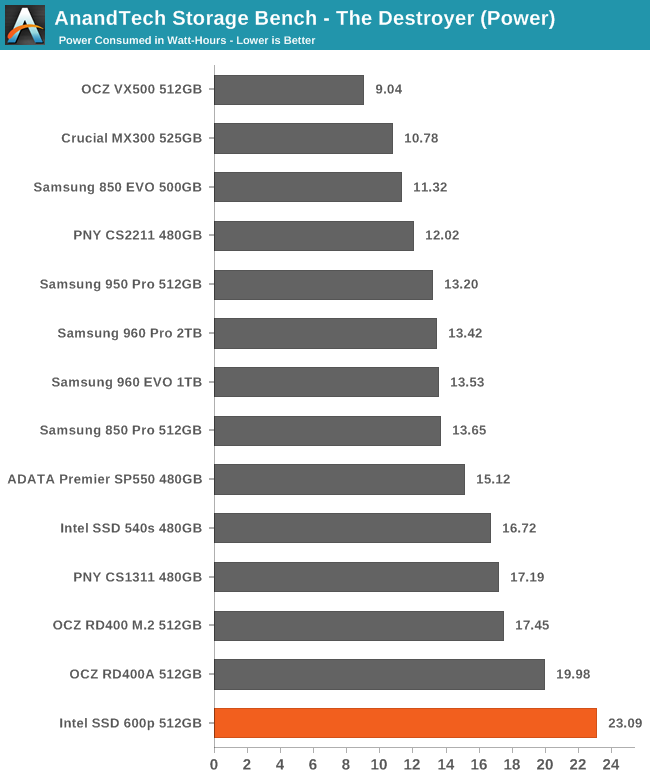
Operating a PCIe 3.0 x4 link requires quite a bit more power than a SATA link, so most PCIe SSDs start at a disadvantage in power consumption and make up for it by completing the test fast enough that the total energy used is not higher than is typical for SATA SSD. The 600p doesn't complete The Destroyer any quicker than a SATA SSD and the 40nm fab process used by the SM2260 controller doesn't do it any favors here either.










63 Comments
View All Comments
ramvalleru - Tuesday, December 6, 2016 - link
What advantages does Intel 600p has over Samsung 850 Evo with its 4 x pci-e. Less bottleneck with multi application writes and reads?KAlmquist - Friday, December 9, 2016 - link
If you mean compared to the 960 EVO, the 600p is less expensive. Also, with the 600p you are getting the Intel brand name and quality control, backed up with a 5 year warranty vs. a 3 year warranty on the 960 EVO.RetsamCP - Saturday, December 24, 2016 - link
I may just be a little confused but how did the 960 Pro 2TB bench and average service time latency of 160.9 ms in the Destroyer bench but score 0 for percentage of service times >100 ms?There had to be service times over 100 ms for the average to be over 100 ms, but how was the average affected so much when service times >100 ms made up <0.01% of the total benchmark?
What am I missing?